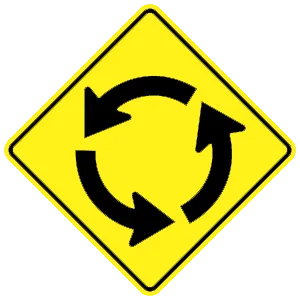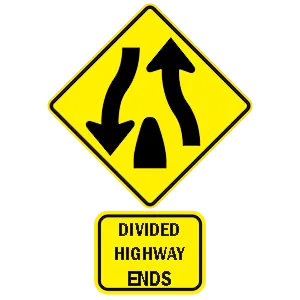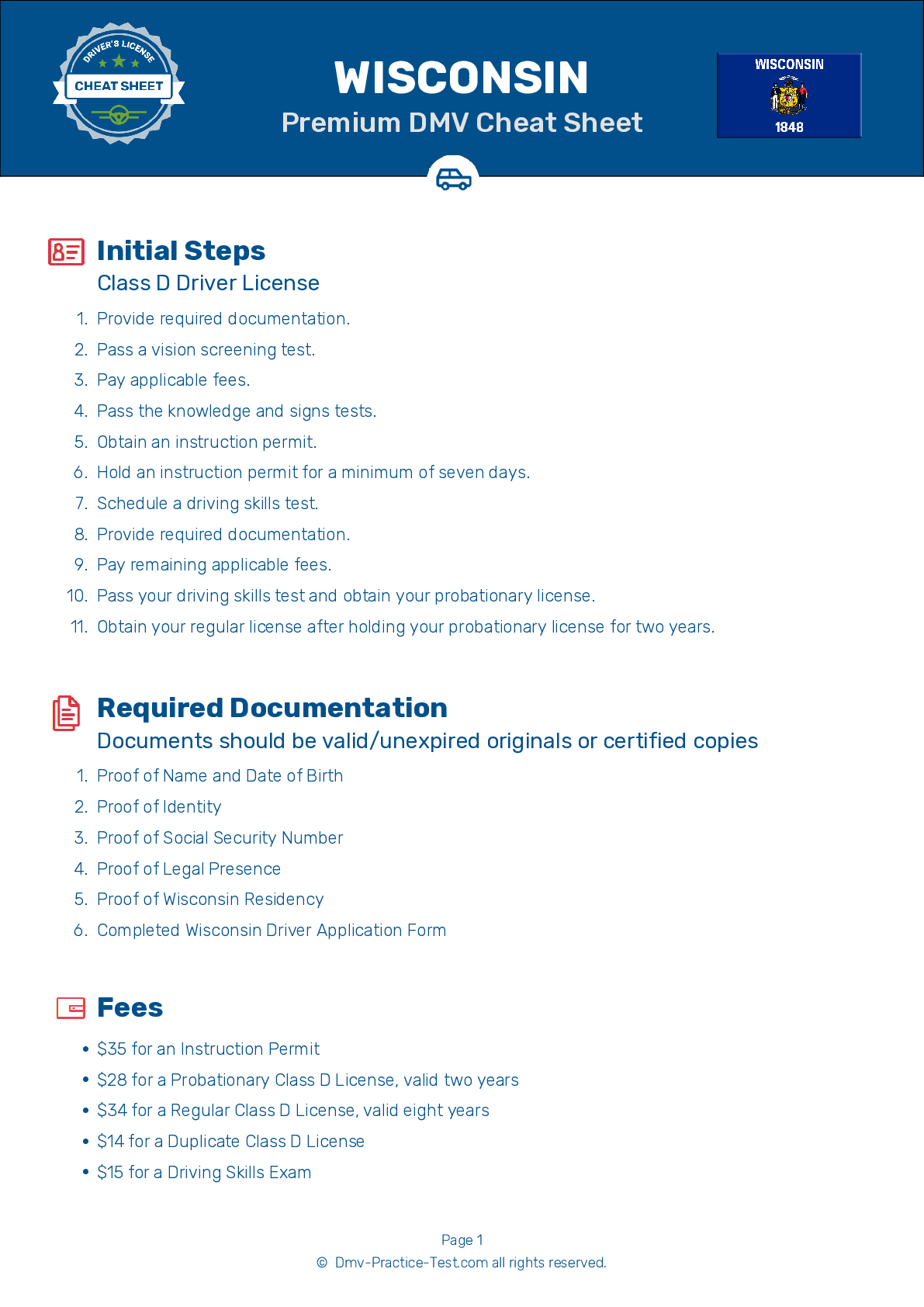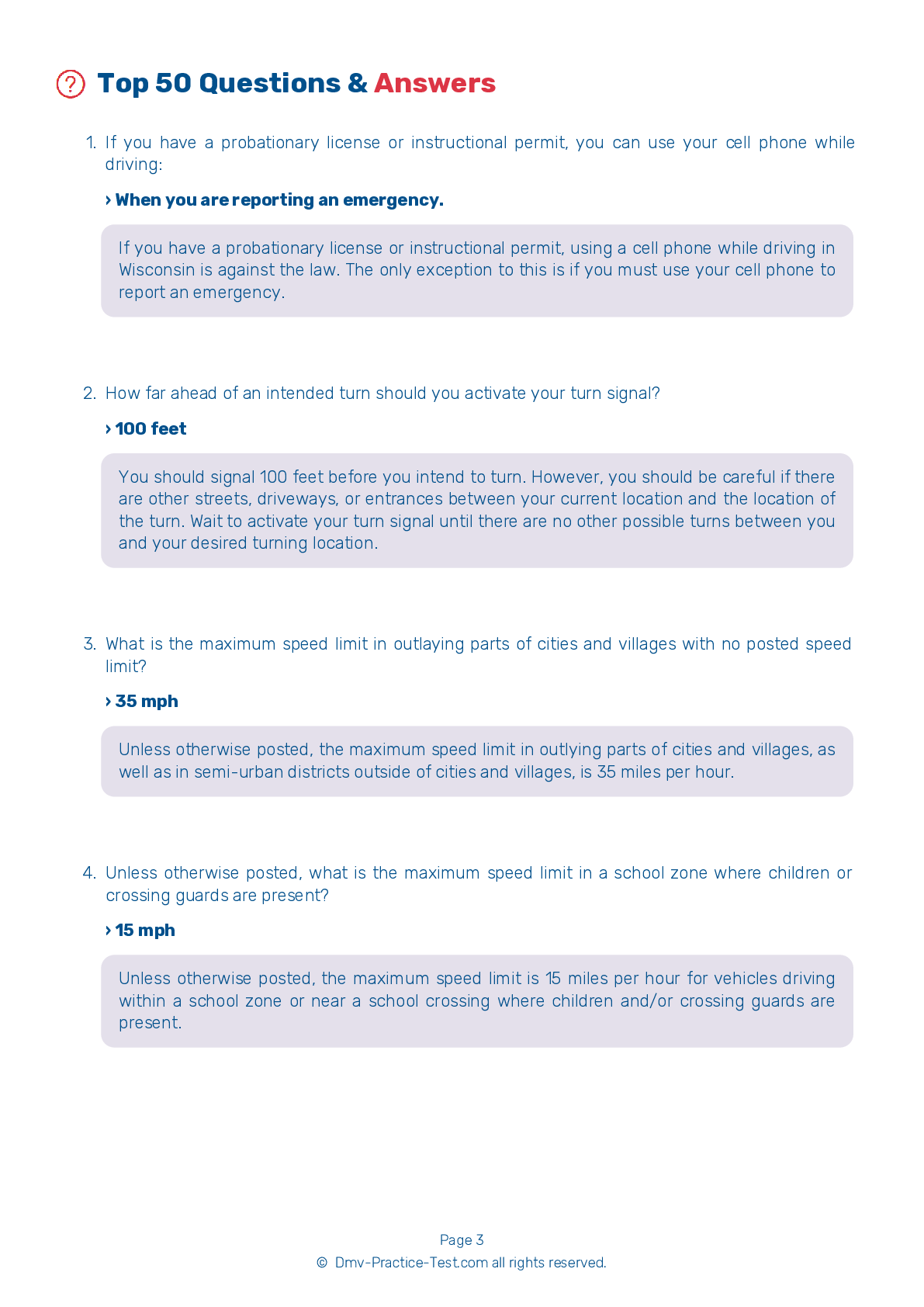FREE Wisconsin DMV Practice Test #16 Page 7 of 7
The Wisconsin DMV practise examinations have been updated for January 2025. It includes questions based on the Wisconsin Driver Handbook's most significant traffic signals and legislation for 2025. Use actual questions that are very similar (often identical!) to the DMV driving permit test and driver's licence exam to study for the DMV driving permit test and driver's licence exam.
On the practise exam, each question gets a tip and explanation to help you remember the concepts. The written component of the official Wisconsin DMV test will include questions about traffic rules, traffic signs, and driving statutes, as well as knowledge from the Driver Handbook.
To obtain a passing grade, you must correctly answer 40 of the 50 questions. Use the practise exam provided by the Wisconsin Department of Motor Vehicles to help you prepare for your instruction permit or driver's licence.
The DMV exam is available in several languages.
Using any kind of testing assistance will result in an automatic fail, and the DMV may take additional action against your driver's licence, so stay away from it.
43 . What may help drivers conserve gasoline?
Every time you have to stop quickly, it takes time and fuel to accelerate and get your vehicle back up to the speed of traffic. Drivers who look far ahead of their vehicles can slow down gradually or change lanes to avoid unnecessary braking, leading to better gas mileage.
44 . This sign means:

This sign indicates that a roundabout is ahead. Enter a roundabout at a low speed and yield to existing traffic.
45 . This sign means:

Warning signs are usually diamond-shaped with black markings on a yellow background. They alert drivers to upcoming hazards. This sign indicates that the divided highway is about to end.
46 . The effect that alcohol has on your reflexes and judgment:
Consuming any type of alcohol can have negative effects on your reflexes and judgment. It does not matter which type of alcohol is consumed, only how much alcohol has entered a person's bloodstream.
47 . Always signal when:
Your turn signals should always be used when you make any movement to the left or right. You should use your signal when pulling into traffic from a curbside parking space, moving into a new lane, or passing another vehicle.
48 . When a vehicle with an Anti-Lock Braking System starts to lose traction on a slippery road, drivers should:
If their vehicle loses traction on a slippery road, a driver with an Anti-Lock Braking System (ABS) needs to press down hard on the brake pedal, hold it, and steer out of danger. In an emergency situation, the ABS automatically pumps the brakes at a faster rate than the driver could. Removing steady pressure from the brake pedal or pumping the brakes will disengage the ABS.
49 . If you need to slow down while driving on a slippery road, the first thing you should do is:
To slow down on a slippery road, you should first take your foot off the gas pedal. If you need to slow down even more, gently apply a slow, steady pressure to your brake pedal.
50 . You are driving along a street and hear a siren. You cannot immediately see the emergency vehicle. You should:
If you hear a siren or an air horn close by but do not know exactly where the emergency vehicle is, safely pull over to the right side of the road and stop until you are sure it is not headed toward you.
Need Car Insurance? No problem!
Compare the best rates in Wisconsin and find a personalized policy that meets your needs.
1. Are You Currently insured ?
2. Married ?
3. Do you own your Home?
4. Do you have more than 1 car ?
5. Have you or a Family Member Honorably Served in U.S. Military ?
6. Your Name
7. Age
8. Zip code
IMPORTANT REMINDER:Auto Insurance is Mandatory to drive in Wisconsin. Get covered before you hit the road to avoid any fines.
Ranked by best match



